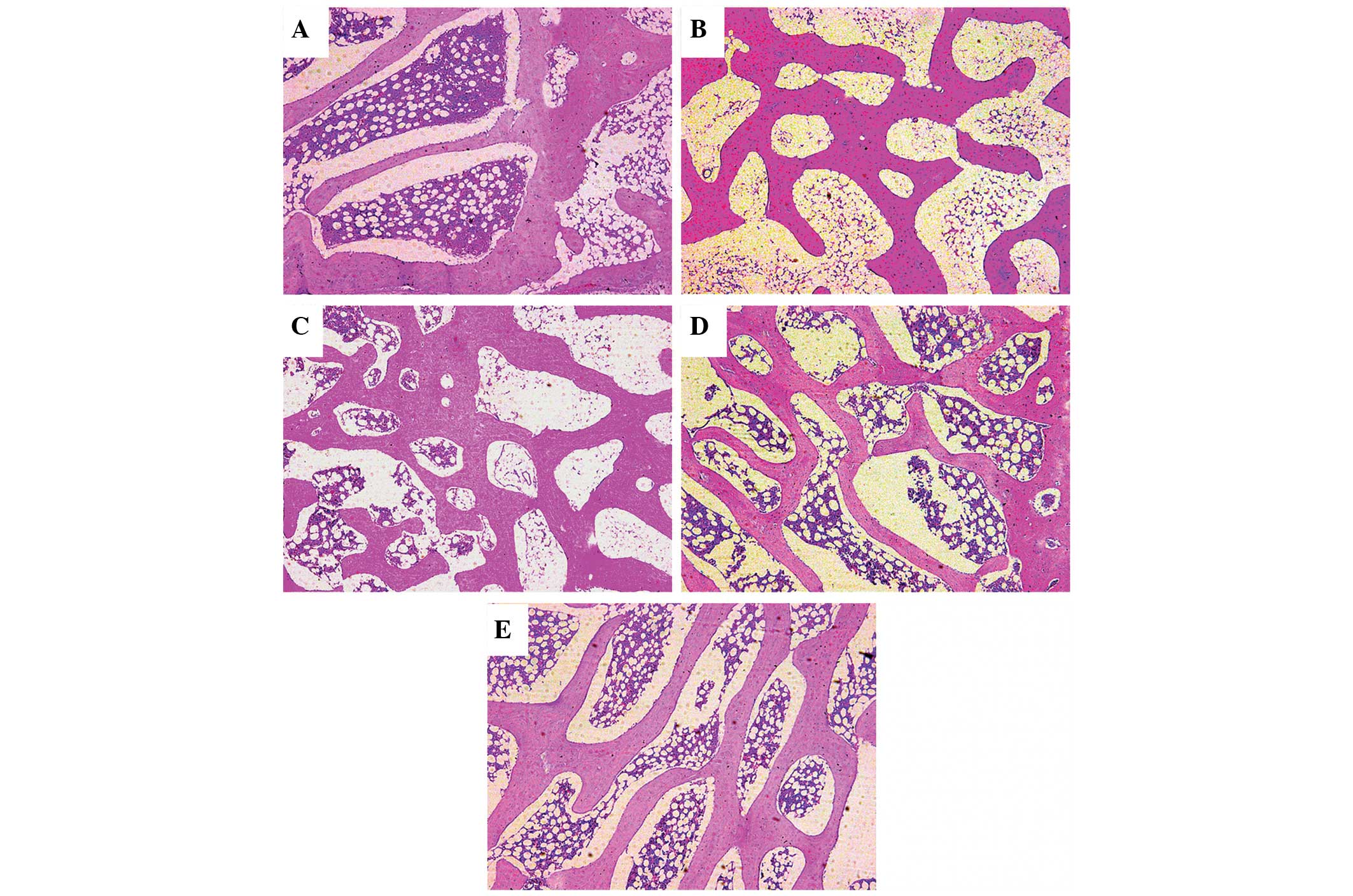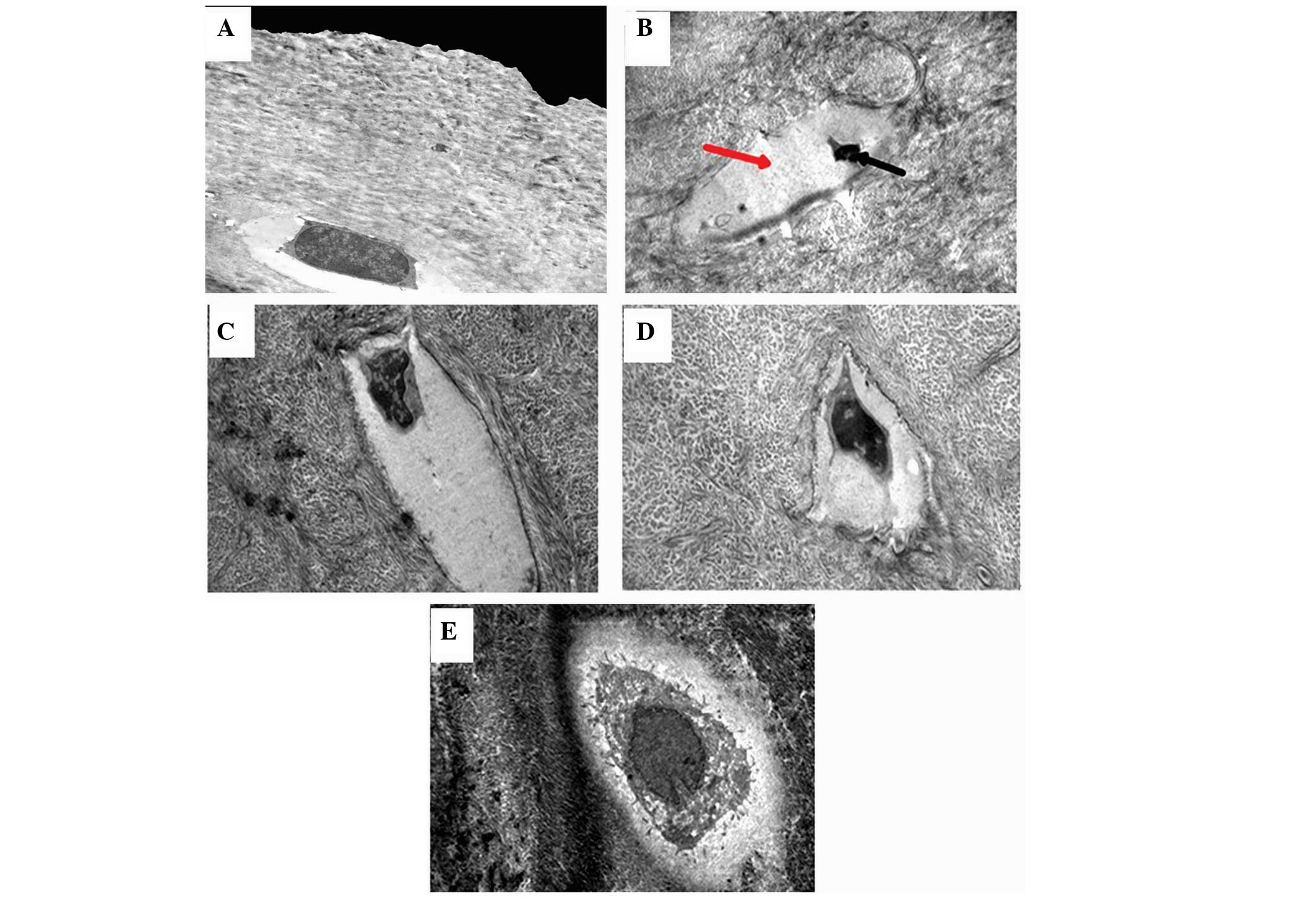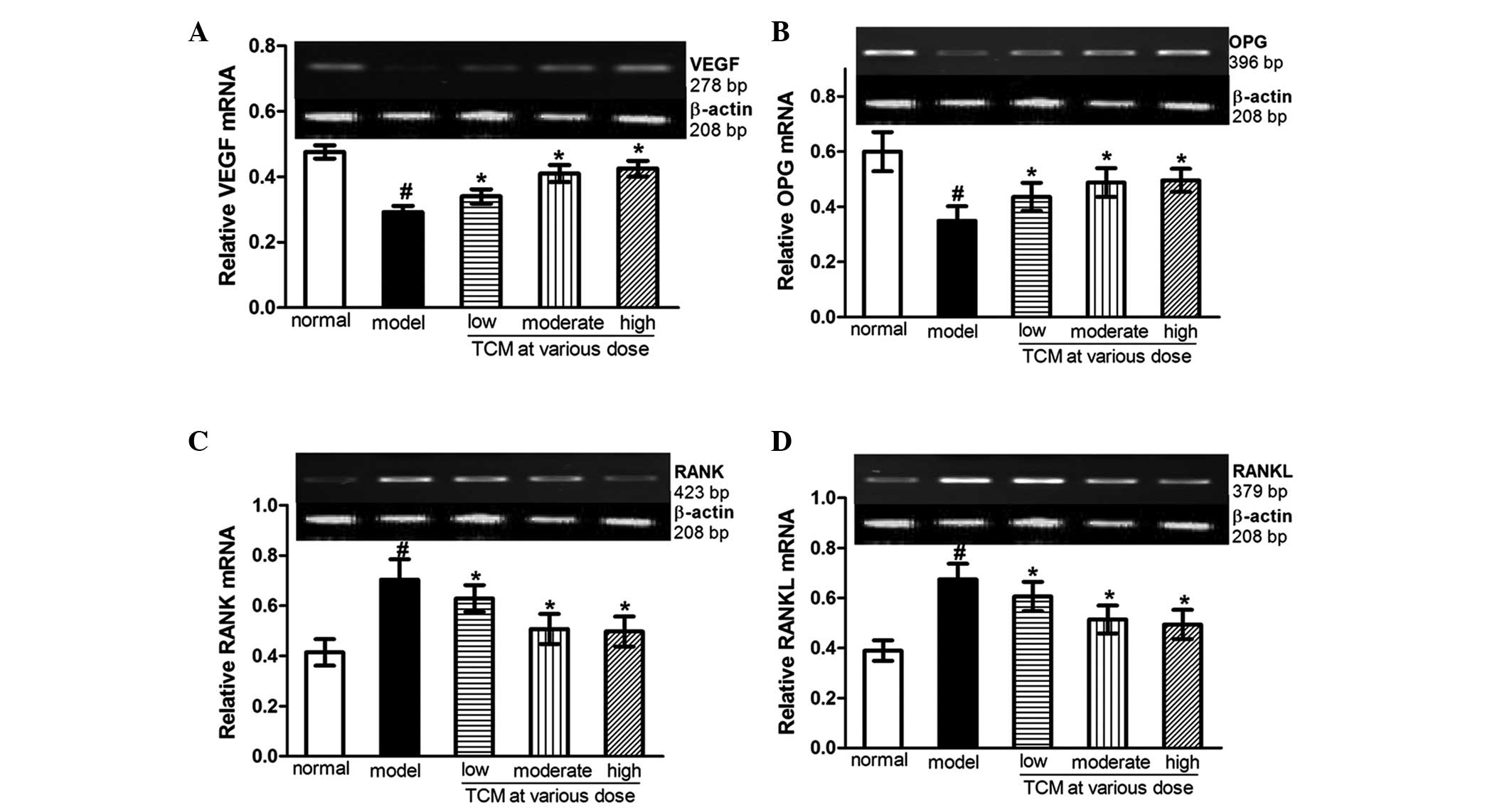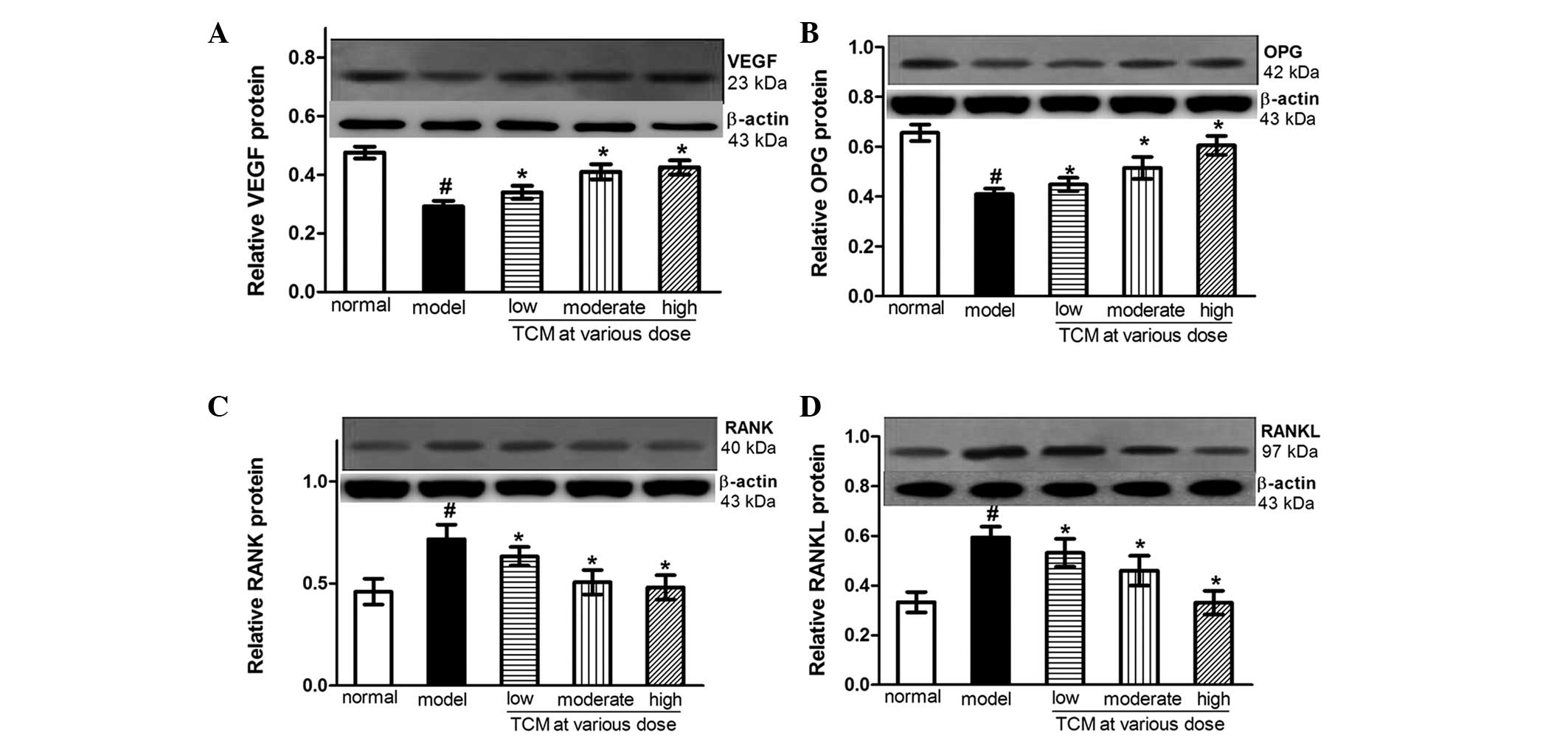|
1
|
Beckmann R, Shaheen H, Kweider N, Ghassemi
A, Fragoulis A, Hermanns-Sachweh B, Pufe T, Kadyrov M and Drescher
W: Enoxaparin prevents steroid-related avascular necrosis of the
femoral head. Scientific World Journal. 2014:3478132014. View Article : Google Scholar : PubMed/NCBI
|
|
2
|
Sheng H, Sheng CJ, Cheng XY, Zhang G, Lee
KM, Leung KS, Qu S and Qin L: Pathomorphological changes of bone
marrow adipocytes in process of steroid-associated osteonecrosis.
Int J Clin Exp Pathol. 6:1046–1050. 2013.PubMed/NCBI
|
|
3
|
Bekler H, Uygur AM, Gökçe A and
Beyzadeoğlu T: The effect of steroid use on the pathogenesis of
avascular necrosis of the femoral head: An animal model. Acta
Orthop Traumatol Turc. 41:58–63. 2007.In Turkish.
|
|
4
|
Steffen RT, Athanasou NA, Gill HS and
Murray DW: Avascular necrosis associated with fracture of the
femoral neck after hip resurfacing: Histological assessment of
femoral bone from retrieval specimens. J Bone Joint Surg Br.
92:787–793. 2010. View Article : Google Scholar : PubMed/NCBI
|
|
5
|
Tong P, Wu C, Jin H, Mao Q, Yu N, Holz JD,
Shan L, Liu H and Xiao L: Gene expression profile of
steroid-induced necrosis of femoral head of rats. Calcif Tissue
Int. 89:271–284. 2011. View Article : Google Scholar : PubMed/NCBI
|
|
6
|
Varoga D, Drescher W, Pufe M, Groth G and
Pufe T: Differential expression of vascular endothelial growth
factor in glucocorticoid-related osteonecrosis of the femoral head.
Clin Orthop Relat Res. 467:3273–3782. 2009. View Article : Google Scholar : PubMed/NCBI
|
|
7
|
Yeh LC and Lee JC: Osteogenic protein-1
increases gene expression of vascular endothelial growth factor in
primary cultures of fetal rat calvaria cells. Mol Cell Endocrino.
153:113–124. 1999. View Article : Google Scholar
|
|
8
|
Wang G, Zhang CQ, Sun Y, Feng Y, Chen SB,
Cheng XG and Zeng BF: Changes in femoral head blood supply and
vascular endothelial growth factor in rabbits with steroid-induced
osteonecrosis. J Int Med Res. 38:1060–1069. 2010. View Article : Google Scholar : PubMed/NCBI
|
|
9
|
Simonet WS, Lacey DL, Cunstan CR, Kelley
M, Chang MS, Lüthy R, Nguyen HQ, Wooden S, Bennett L, Boone T, et
al: Osetoprotegerin: A novel secreted protein involved in the
regulation of bone density. Cell. 89:309–319. 1997. View Article : Google Scholar : PubMed/NCBI
|
|
10
|
Shiotani A, Takami M, Itoh K, Shibasaki Y
and Sasaki T: Regulation of osteoclast differentiation and function
by recep to ractivator of NFkB ligand and osteoprotegerin. Anat
Rec. 268:137–146. 2002. View
Article : Google Scholar : PubMed/NCBI
|
|
11
|
Boyce BF and Xing L: Functions of
RANKL/RANK/OPG in bone modeling and remodeling. Arch Biochem
Biophys. 473:139–146. 2008. View Article : Google Scholar : PubMed/NCBI
|
|
12
|
Boyce BF and Xing L: The RANKL/RANK/OPG
pathway. Curr Osteoporos Rep. 5:98–104. 2007. View Article : Google Scholar : PubMed/NCBI
|
|
13
|
Hofstaetter JG, Wang J, Yan J and Glimcher
MJ: The effects of alendronate in the treatment of experimental
osteonecrosis of the hip in adult rabbits. Osteoarthritis
Cartilage. 17:362–370. 2009. View Article : Google Scholar
|
|
14
|
Zhong X, Lin J, Zhou J, Xu W and Hong Z:
Anti-proliferative effects of qianliening capsules on prostatic
hyperplasia in vitro and in vivo. Mol Med Rep. 12:1699–1708.
2015.PubMed/NCBI
|
|
15
|
Seamon J, Keller T, Saleh J and Cui Q: The
pathogenesis of nontraumatic osteonecrosis. Arthritis.
2012:6017632012. View Article : Google Scholar : PubMed/NCBI
|
|
16
|
Yang L, Boyd K, Kaste SC, Kamdem L, Rahija
RJ and Relling MV: A mouse model for glucocorticoid-induced
osteonecrosis: effect of a steroid holiday. J Orthop Res.
7:169–175. 2009. View Article : Google Scholar
|
|
17
|
Liu R, Kang X, Xu L, Nian H, Yang X, Shi H
and Wang X: Effect of the combined extracts of Herba epimedii and
Fructus ligustri lucidi on sex hormone functional levels in
osteoporosis rats. Evid Based Complement Alternat Med.
2015:1848022015. View Article : Google Scholar : PubMed/NCBI
|
|
18
|
Chen WH and Wang HM: Experimental research
progress of warming yang and reinforcing kidney of Chinese medicine
to promote the differentiation of bone marrow stromal cells.
Zhongguo Gu Shang. 24:352–356. 2011.In Chinese. PubMed/NCBI
|
|
19
|
Bai YD, Yang FS, Xuan K, Bai YX and Wu BL:
Inhibition of RANK/RANKL signal transduction pathway: a promising
approach for osteoporosis treatment. Med Hypotheses. 71:256–258.
2008. View Article : Google Scholar : PubMed/NCBI
|
|
20
|
Kim HK, Morgan-Bagley S and Kostenuik P:
RANKL inhibition: A novel strategy to decrease femoral head
deformity after ischemic osteonecrosis. J Bone Miner Res.
21:1946–1954. 2006. View Article : Google Scholar : PubMed/NCBI
|
|
21
|
Wittrant Y, Theoleyre S, Couillaud S,
Dunstan C, Heymann D and Rédini F: Relevance of an in vitro
osteoclastogenesis system to study receptor activator of NF-kB
ligand and osteoprotegerin biological activities. Exp Cell Res.
293:292–301. 2004. View Article : Google Scholar : PubMed/NCBI
|
|
22
|
Geusens P: The role of RANK
ligand/osteoprotegerin in rheumatoid arthritis. Ther Adv
Musculoskelet Dis. 4:225–233. 2012. View Article : Google Scholar : PubMed/NCBI
|
|
23
|
Mandelin J, Li TF, Liljeström M, Kroon ME
and Hanemaaijer R: I mba la nce of RANKL/RANK/OPG system in
interface tissue in loosening of total hip replacement. J Bone
Joint Surg Br. 85:1196–1201. 2003. View Article : Google Scholar : PubMed/NCBI
|
|
24
|
Varoga D, Drescher W, Pufe M, Groth G and
Pufe T: Differential expression of vascular endothelial growth
factor in glucocorticoid-related osteonecrosis of the femoral head.
Clin Orthop Relat Res. 467:3273–3282. 2009. View Article : Google Scholar : PubMed/NCBI
|
|
25
|
Lee YJ, Lee JS, Kang EH, Lee YK, Kim SY,
Song YW and Koo KH: Vascular endothelial growth factor
polymorphisms in patients with steroid-induced femoral head
osteonecrosis. J Orthop Res. 30:21–27. 2012. View Article : Google Scholar
|


















